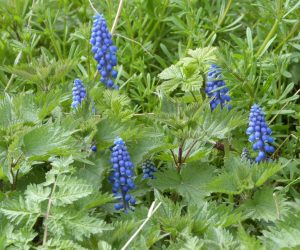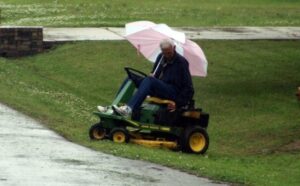
The setting is Southern Ontario, with its temperate climate and fertile soils, and home to a diverse range of lawns that reflect the unique philosophies of their owners.
In this narrative, we will introduce you to four fictional neighbors, each with their distinct approach to cultivating what they consider a “good” lawn.
These characters will share their perspectives, and you will discover how their views on lawns intertwine with actual information about plant identification, the science of lawns, historical influences, and botany.
The Biodiversity Aficionado – Susan
Susan’s lawn stands out from the rest in her neighborhood. Instead of meticulously manicured grass, her yard is a vibrant tapestry of wildflowers and native grasses. Susan firmly believes that a “good” lawn is one that supports biodiversity and contributes to the local ecosystem.
Susan: “My lawn isn’t just a lawn; it’s a habitat. I’ve planted a mix of native grasses like little bluestem and wildflowers like purple coneflowers and milkweed. These plants attract pollinators and provide food for local wildlife. It’s a miniature prairie right here in Southern Ontario!”
Susan’s neighbors are initially skeptical of her untamed garden, but over time, they come to appreciate the colorful display of nature in her front yard. Some even start adopting native plants in their own lawns.
The Traditionalist – James
James is the epitome of a lawn traditionalist. He takes pride in his lush, uniform, and perfectly manicured Kentucky bluegrass lawn. For him, a “good” lawn means adhering to time-tested methods and maintaining a pristine appearance.
James: “A lawn should be a symbol of order and discipline. I mow mine at the same height every week, water it religiously, and use the best fertilizers available. It’s like a green carpet, and I won’t have it any other way.”
Susan admires James’s dedication to his lawn but wishes he would consider the ecological impact of his maintenance practices. She often shares articles on sustainable lawn care with him, hoping to inspire a change in his philosophy.
The Historical Enthusiast – Emily
Emily’s lawn is a living tribute to the historical gardens of Southern Ontario. She has painstakingly researched and recreated the lawn styles of different time periods, from the Victorian era to the mid-20th century.
Emily: “I’ve always been fascinated by the history of gardens and lawns. Each era had its unique aesthetic, and I’ve tried to capture that in my lawn. It’s like stepping back in time right here in my backyard.”
Emily’s neighbors are charmed by her dedication to preserving history. They often visit her lawn for inspiration and learn about the evolution of lawn care practices over the years. Susan finds Emily’s approach intriguing, as it offers insights into how lawn care has evolved to its present state.
The Botanical Expert – David
David is a botany professor at a local university, and his lawn serves as his outdoor laboratory. He has meticulously cataloged and labeled every plant species in his yard, turning it into a living encyclopedia of botany.
David: “To me, a ‘good’ lawn is a learning opportunity. I’ve planted a wide variety of grasses and plants from all over the world. It’s like having a global botanical collection right here in my backyard.”
David’s neighbors appreciate his lawn’s educational aspect and often seek his advice on plant identification and cultivation. Emily, in particular, finds his lawn an endless source of inspiration for her historical gardening projects.
Interactions and Perspectives
As these four neighbors interact with each other and their lawns evolve, their philosophies begin to intersect and influence one another. Susan’s passion for biodiversity sparks James’s interest in reducing the use of chemical fertilizers and pesticides. He starts experimenting with incorporating more native plants into his lawn, adding patches of wildflowers along the edges.
Emily, always keen on historical accuracy, is intrigued by the native grasses in Susan’s lawn and begins researching the historical uses of these plants in Southern Ontario. She discovers that many of them were vital to indigenous cultures in the region, leading her to incorporate them into her historical lawn designs.
David, inspired by Emily’s dedication to historical accuracy, starts a project to document the historical uses of grasses and plants in Southern Ontario, blending his botanical expertise with Emily’s historical research.
In the end, these four neighbors, with their distinct lawn philosophies, discover the richness of Southern Ontario’s natural and cultural heritage. Their interactions and evolving perspectives create a unique blend of biodiversity, tradition, history, and botany that enriches their neighborhood and fosters a deeper understanding of the multifaceted world of lawns.
Conclusion
Southern Ontario’s diverse lawn philosophies reflect the region’s natural beauty, cultural heritage, and ecological significance. Whether you prioritize biodiversity, tradition, history, or botany in your lawn, there is a wealth of knowledge and inspiration to be found in the tapestry of lawns in this vibrant community.
So, next time you step outside, take a moment to appreciate the unique stories and philosophies that flourish right in your own backyard.






